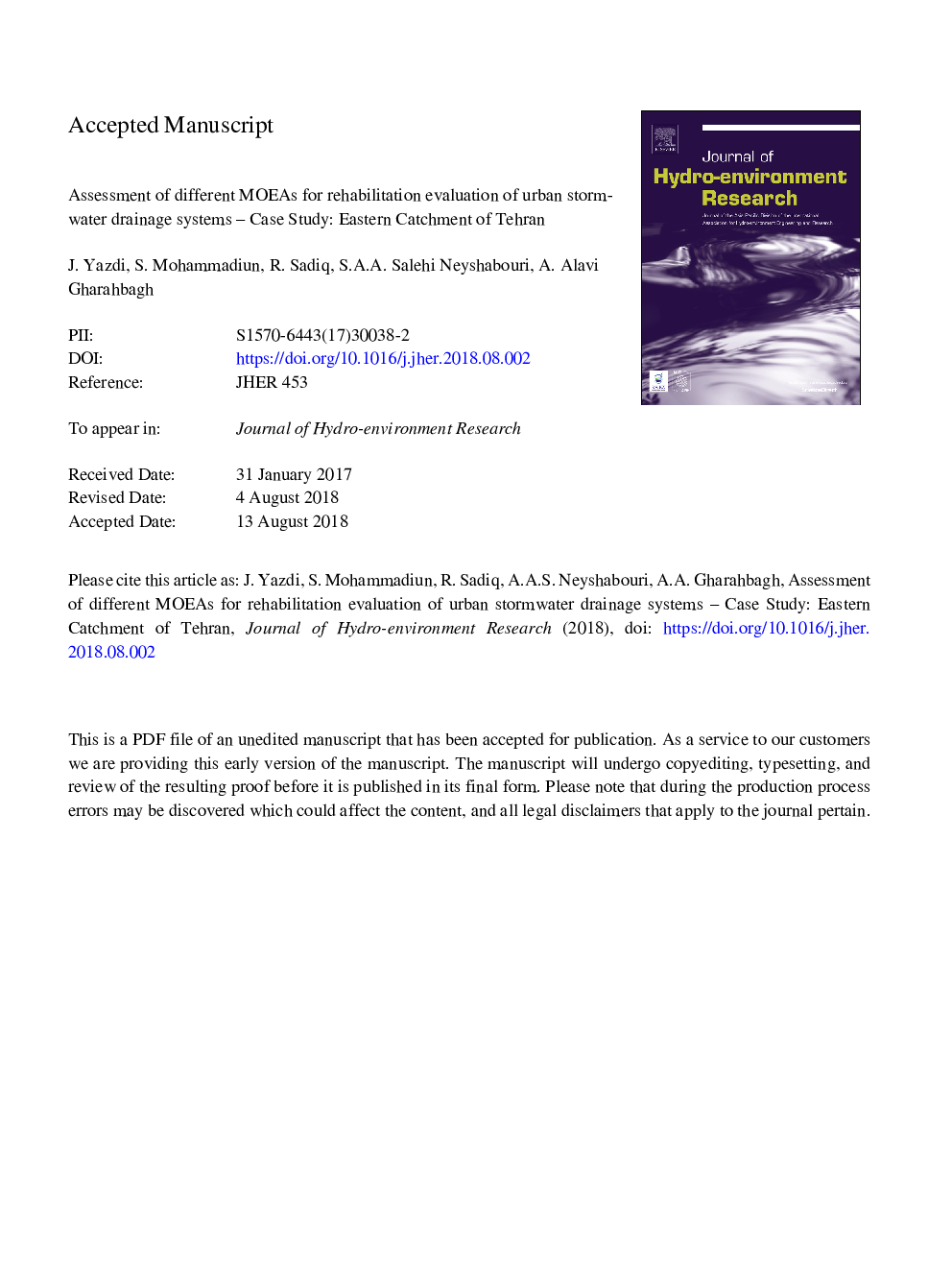| Article ID | Journal | Published Year | Pages | File Type |
|---|---|---|---|---|
| 8875435 | Journal of Hydro-environment Research | 2018 | 35 Pages |
Abstract
Design/rehabilitation of urban stormwater drainage systems has become a challenging issue due to increasing frequency and severity of floods in urbanized areas. Optimization frameworks can provide a proficient computational tool for stormwater management. In this study, using four different optimization algorithms and EPA-SWMM (Environmental Protection Agency -StormWater Management Model) software, a coupled numerical and optimization model was developed to rehabilitate the drainage system in eastern Tehran, Iran. The current drainage network suffers from a significant lack of hydraulic capacity. Thus, combinations of relief tunnels and/or storage units were evaluated and optimal rehabilitation strategies were suggested according to minimizing conflicting objective functions of costs and flooding. Results have revealed that AMALGAM (A Multi-ALgorithm, Genetically Adaptive Multi-objective) outperformed three other algorithms, NSGA-II (Non-dominated Sorting Genetic Algorithm-II), NSHS (Non-dominated Sorting Harmony Search), and NSDE (Non-dominated Sorting Differential Evolution) for the evaluation of rehabilitation of Urban Stormwater Drainage Systems (USDSs) in terms of convergence and diversity criteria.
Related Topics
Life Sciences
Agricultural and Biological Sciences
Agricultural and Biological Sciences (General)
Authors
J. Yazdi, S. Mohammadiun, R. Sadiq, S.A.A. Salehi Neyshabouri, A. Alavi Gharahbagh,
